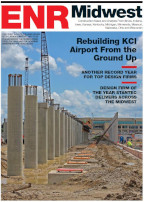The voter-approved Denver Bond Program is expected to pour another $200 million in construction and improvement projects into the Denver area in 2010.
Over the past two years, the program has funded more than $100 million in city improvement projects, with another $200 million expected for 2010. Projects include improvements to roads, libraries, parks, recreation centers, child-care sites, hospitals, public safety, city buildings and cultural facilities.
Recently completed projects consist of maintenance at the Denver Museum of Nature and Science, including the renovation of the Phipps Gallery. In addition to various improvements to streets, intersections and irrigation systems throughout the city, the program also finished renovations at the Decker Branch Library and upgrades to the Washington Park Recreation Center.
Among the projects slated for 2010 is the new municipal animal shelter, funded by an $18.1-million-bond allocation, and the replacement of the police crime lab, funded by a $39.3-million-bond allocation. Construction on the new branch libraries at Green Valley and Stapleton, utilizing $37.5 million in bond money, will get under way next year. The coming year also calls for the start of several transportation projects, including the Central Park Boulevard Interchange.
Twenty-five projects were completed in the third quarter of 2009, bringing total completions to 83 since the program’s start in January 2008. Another 58 are currently in construction, with 114 in planning or design. Nearly all of the program’s 280 planned improvement projects will be completed by 2012, with many slated for completion by 2011.
Thus far, the completed projects represent the efforts of 13 design firms and 22 construction companies.
“We did not know that the economy would be in its current state when we created the bond program, but we’re glad the voters passed the initiative when they did,” says Amy Mueller, Denver’s deputy chief of staff to Mayor John Hickenlooper. “The bond money is now helping to offset what is happening elsewhere in the economy, creating and saving jobs in the public and private sectors,”
In early 2008, foreseeing the need to stimulate the local economy, Hickenlooper asked bond program administrators to accelerate the timeline of as many bond projects as possible, in an effort to move the city money back into the local economy, Mueller says.
The original five-year construction schedule has been compressed into four years, with exceptions, such as some of the cultural and third-party projects dependant on private funds to augment the bond funds. Fundraising for such projects has been slower than anticipated.
Renovation of the Boettcher Concert Hall at the Denver Performing Arts Complex is one of several projects in limbo. The project, which is being managed by Denver-based Romani Group Inc., was allocated $60 million in bond money but needs more than $30 million in private funding for its completion—possibly double or triple that amount, depending on whether plans for a larger replacement hall come to fruition.
Another cultural project stalled by the sluggish fundraising is the storage facility and educational center at the Denver Museum of Nature and Science. While the project is not officially on hold, the timeline and scope of the project may change if adequate private funding cannot be procured. The project, in planning for 2011, requires a private match of $23 million beyond the $30 million bond award.
On the upside, current economic conditions have contributed to more favorable bids and lower construction costs, which have helped stretch the city’s bond money further, Mueller says.



